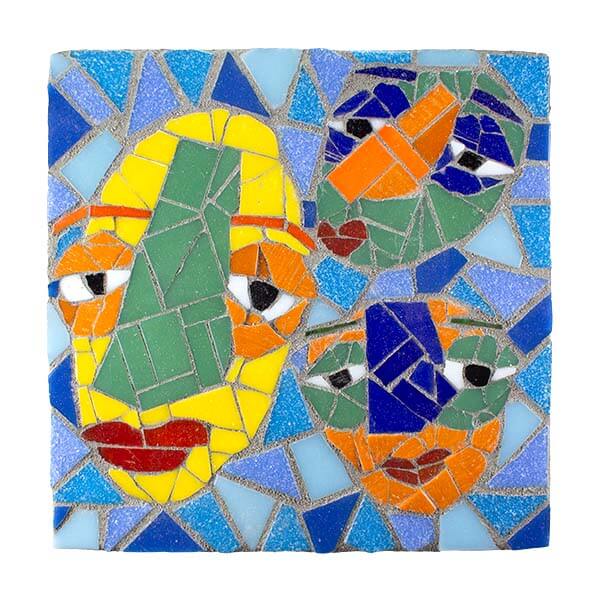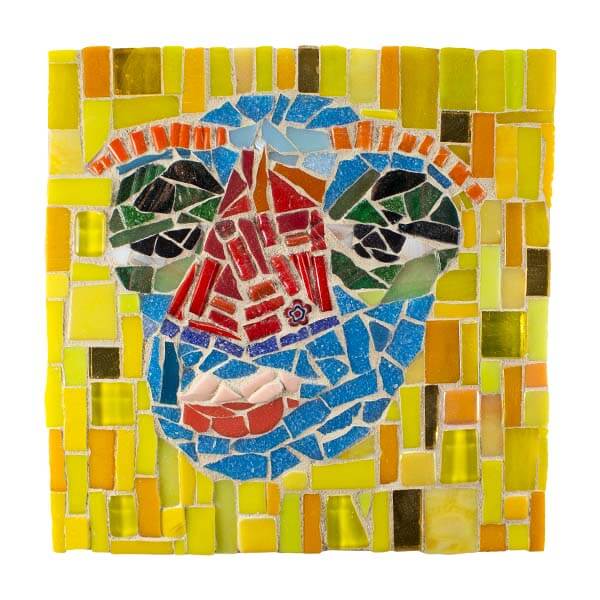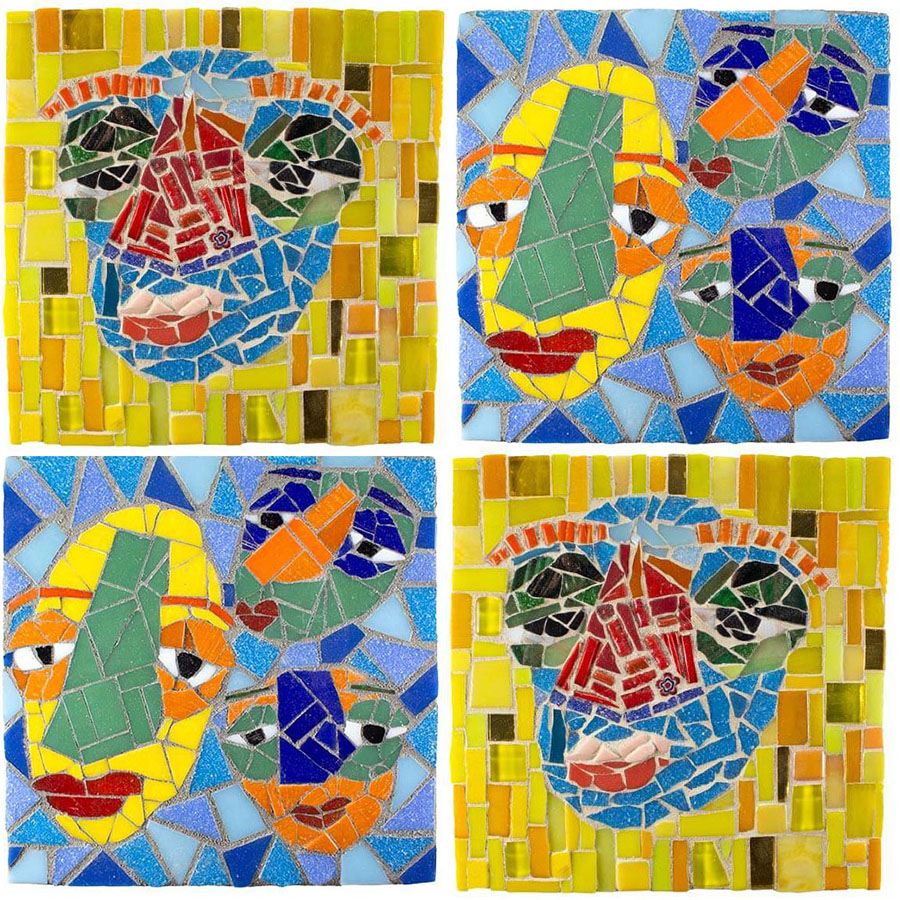Artist Ivana Sorrells works at Mosaic Art Supply, and she made a couple of small mosaic plaques using our vitreous glass tile, stained glass, and 8-inch plywood mosaic backer boards, plus a few odd findings from a few other types of mosaic glass.
Ivana hadn’t worked in mosaic before these pieces, but she gave it a try when I started a series of small mosaics and recommended them as a way of learning the basics of the craft.
These mosaics were quick and easy for Ivana to make because they weren’t large and detailed, and they were the same size. That second point is more important than you might realize.
One you figure out the resolution issues for a particular size backer, you can make additional mosaics of that size much more quickly.
I wanted to share Ivana’s mosaics because they are original in terms of andamento, background, and artistic style.

Developing YOUR Style
The easiest way to develop your own idiosyncratic artistic style is to render from the imagination instead of copying a particular model.
Another method for developing your own style is to render an image at a resolution that requires that you simplify the image in some way.
Unless you are working at a high resolution where each tile is effectively little more than a pixel, mosaic requires that you posterize your image in some way and make simplifying assumptions.
This is how style is born. Each person simplifies an image differently, with each person incorporating varying degrees of symbolic representation.
Mosaic is rich with opportunities to learn style, while painting and drawing make it all too easy to render an image with the verisimilitude of a photograph.
Verisimilitude
The need to capture likeness is understandable because it is an obvious way to learn and demonstrate artistic competence.
But a novice who fully devotes themselves to working in the studio quickly learns that rendering images faithfully isn’t too difficult, especially with practice and design aids.
More importantly, excellence in rendering with verisimilitude isn’t the most important skill an artist can have by far, and a natural ability to render is actually dead without some imagination and style.
Many artists who have a natural ability to copy a model with exact likeness complain that they have no ability to draw from their imagination.
Verisimilitude can be a trap or limitation.

An Important Tip
I think the mosaic above is the very first mosaic made by Ivana. Notice how you can literally see Ivana’s skill level progressing while making the mosaic, with the background being more tightly executed than the figure.
I love the background and not merely because it has a narrow controlled grout line. The mix of different types of glass mosaic tile gives it an interesting mixed-media texture, and it’s a good example of similar hues working together in harmony.
TIP for First Timers: Before you glue down your first tile, spend some time cutting and arranging tile. For example, make three different eyes before you glue down the first eye.
Notice how Ivana uses a different background with a completely different andamento for her second mosaic. I would like to see a series of these, and I suspect that they would get progressively more interesting.
Ivana made these using the direct method (gluing the tiles one-at-a-time directly to the backer).
If she made future mosaics using a transfer method, which allows you to edit and revise a mosaic before it is glued to the backer, there’s no telling how good the series might be. These were a first attempt, and they were drawn from the imagination.


Leave a Reply